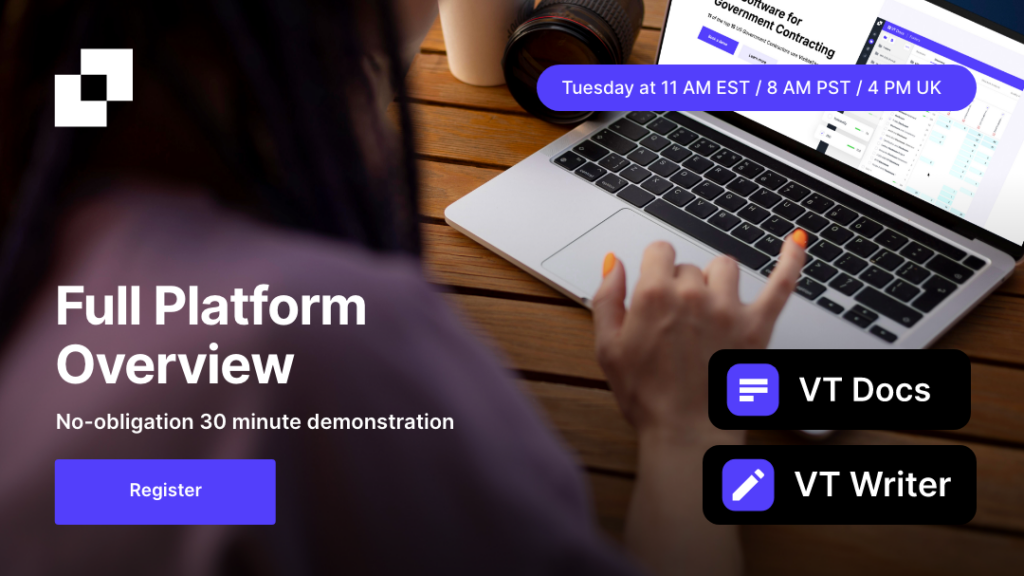In the world of government contracting, mastering the art of responding to Requests for Proposals (RFPs) is essential. Understanding the meaning of an RFP goes beyond simply recognizing it as a document. It’s about grasping its purpose, the benefits it offers, and how it influences business opportunities with government agencies. Here, we’ll break down what an RFP means, why it matters, and how businesses can leverage it to secure lucrative contracts.
RFP Meaning Defined
An RFP is a formal document issued by government agencies when they need specific products, services from external providers. The RFP process allows government agencies to collect detailed proposals from vendors. This gives them a structured way to evaluate which vendor best meets their needs. The evaluation considers technical capabilities, pricing, experience, and other key factors.
An RFP isn’t just a simple request. It’s an invitation to compete for a business contract, often worth millions of dollars. In essence, the meaning of an RFP goes beyond the document itself. It encompasses the intent to identify and select the most qualified vendor for a high-stakes contract.
Why Do Governments Use RFPs?
Governments use RFPs to ensure transparency, fairness, and competition in the procurement process. For agencies managing taxpayer dollars, the stakes are high. They must demonstrate that they have selected the best vendor at the best price with the highest value. Here are some of the main reasons behind the RFP process:
- Transparency and Accountability: RFPs provide a structured and traceable approach to awarding contracts. Which government bodies can review to ensure ethical practices.
- Competitive Bidding: Government contracts often attract numerous vendors. So RFPs allow agencies to assess multiple vendors’ proposals based on consistent criteria.
- Value and Efficiency: Through an RFP, agencies can get a wide range of solutions and innovative ideas from various vendors. This helps them achieve the best outcomes within budget.
- Risk Management: By defining detailed requirements and assessing vendors on strict criteria, government agencies can reduce project risks. This can include financial, operational, or reputational factors.
Key Elements of a Government RFP
Understanding RFP meaning in government contracting also involves knowing what to expect within an RFP document. While RFPs vary based on the agency and the type of contract, most government RFPs include:
- Scope of Work (SOW): A detailed outline of the work required, including specific objectives, tasks, and timelines.
- Proposal Instructions: Step-by-step instructions for how vendors should submit their proposals, including any mandatory requirements.
- Evaluation Criteria: The factors that the agency will consider when selecting the winning proposal. This often includes technical approach, price, experience, and past performance.
- Budget Constraints: In some RFPs, agencies specify the budget range. This helps vendors align their proposals with the financial limitations of the project.
- Submission Deadlines: Clear deadlines for when you must submit your proposal and other important milestones in the review process.
For vendors, understanding these components can significantly impact the success of their proposal. An effective response addresses each of these sections comprehensively. Ensuring alignment with the agency’s needs and demonstrating a thorough understanding of the project.
How RFPs Fit into the Government Contracting Process
The RFP meaning becomes clearer when placed in the broader context of government contracting. Government agencies typically follow a series of procurement steps, which include:
- Identification of Needs. The agency identifies a need for products or services that they can’t meet internally.
- Market Research. You can conduct research to understand available solutions and potential vendors.
- Release of the RFP. The agency formally releases the RFP, opening the competition for vendors.
- Proposal Evaluation. Agencies evaluate each proposal based on pre-defined criteria. This phase often includes reviewing technical aspects, conducting interviews, and sometimes product demonstrations.
- Award Decision. Once they evaluate all proposals, the agency awards the contract to the vendor that best meets its criteria.
For businesses, understanding this process provides insight into the timing, preparation, and strategy needed to successfully respond to an RFP. Missing deadlines, misunderstanding requirements, or failing to align with evaluation criteria can lead to missed opportunities.
Understanding the meaning of RFPs in Government Contracting
For businesses looking to succeed in government contracting, understanding the “RFP meaning” is foundational. An RFP is much more than a simple request for bids; it’s a structured pathway to secure government business. Understanding the purpose of RFPs is crucial for success. By understanding what to expect in an RFP document, businesses can better prepare their responses. Developing effective responses will help them position themselves as strong contenders in the competitive government contracting landscape.
RFPs provide significant growth opportunities for prepared businesses, helping them build credibility and establish long-term partnerships with the government. Mastering the RFP process can be the key to unlocking new revenue streams. Strengthening your position in the government contracting market.





